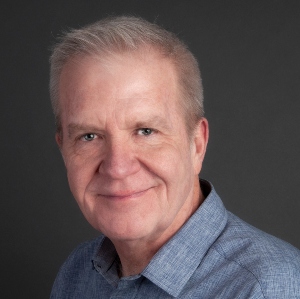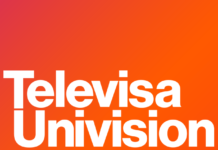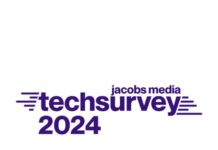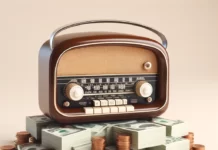
(By Buzz Knight) Dynamic, engaging, unique, creative, entertaining, intimate, purposeful, resilient. As radio heads towards its centennial celebration, those are just a few of the words to describe the business fans adore, advertisers respect, and we all love.
Our resolve as an industry is being tested in ways we never expected with a pandemic, a recession, and disruptive forces all around us. As we prepare to blow out the candles on the birthday cake, I decided to ask various folks associated with the industry this question:
“What will make radio stronger for the next 100 years?”
I approached a diverse group, ranging from programmers to CEOs, owners to sales leaders, consultants to marketers, market managers to engineers, brokers to futurists. We ran the gamut. We also allowed for anonymity so they could push the envelope.
Here are 40 ways (in no particular order) that radio can be stronger for the next 100 years.
1. We need to move back to value-based selling, focused on delivering results not only to local advertisers, but national advertisers as well. Impressions and points have been the focus, but that doesn’t move product. “Points” don’t walk through a business’ door, people do.
2. Ownership caps must be lifted. Radio stations are fighting with each other on a local level while digital giants such as Facebook and Google are stealing the majority of local advertising spends.
3. As far as radio or any industry goes, strength comes from pushing against and through resistance. Radio needs to explore the changes in the world it has been avoiding, like technology, consumer preferences, etc., then start doing the difficult work of innovating to provide superior value to listeners, advertisers, and the community. It is a wide-open space that simply requires resources, talent, and will.
4.Radio industry leaders need to align for the future.
5. How people access entertainment is rapidly changing. Make sure a radio station’s audio (or other entertainment) is immediately available on any platform.
6. Begin the journey back to live and local. Syndication, which seems to work for large public companies, is not the answer for the industry as a whole.
7. Radio should use data for better, hypertargeted ads to create addressable advertising for the medium.
8. Radio needs to evolve into a multimedia sales offering.
9. I’d like to see the industry be better at promoting itself, its strengths and values.
10. Radio coverage must be extended to equal digital coverage. The Radio DNS initiative in Europe shines a light on how radio stations can extend coverage nationwide.
11. Radio needs to innovate a way for AM to be useful as a form of revenue for owners rather than see the delivery system go dark.
12. Radio must find a way to find new and emerging talent and new and exciting formats that will bring those under the age of 20 into the audience tent for the years to come. This is a necessity.
13. I would like to see stations start standing up and having pride and respect for
our industry. Too many are focusing on today’s revenue and diving for dollars.
14. Whether it is helping out with a community blood drive or promoting a national charity, listeners need to feel that their radio station is part of their community.
15. Blow some things up, and imagine things from the view of your future listeners and customers rather than your existing ones.
16. Reduce our dependence on third parties for revenue. We need to get back to direct relationships with clients — even the ones that choose to use an agency.
17. Radio needs to develop new commercial-load models that can sustain a business while putting our medium more on par with pureplays.
18. Radio industry leaders need to engage in realistic scenario planning beyond 2025. I’d suggest 2040.
19. Radio needs to be a stronger multichannel provider of content on all available platforms, thereby transforming into a local content marketing solution for a new breed of advertisers.
20. Our business needs to focus on simplifying the sales process, making it easier to transact business.
21. With other advertising outlets doing a better job of reporting ROI, or at least consumer action, radio needs to build an acceptable model that proves how successful an advertising campaign was.
22. The leaders of tomorrow, whether they be from sales/programming or from outside our business, need to take seriously the priority of making people feel consistently excited and enthusiastic about their jobs.
23. Audience measurement needs to be radically overhauled. The 1940s-based diary methodology is nothing short of barbaric. My recommendations for a radio ratings “currency”: A) a multi-modal methodology that enables respondents to access their choice of a web-based, e-mailed, or snail-mailed questionnaire or a five-minute telephone interview; B) a collection of yesterday’s cume listening (which can be extrapolated to weekly, based on PPM listening patterns and actual time spent listening over the previous 24 hours).
24. The industry needs to tap listener revenue. Digital advertising currently provides about 17% of total station revenue. Digital added isn’t enough to stem the loss in over-the-air advertising. TV and newspaper have two to three times as much digital ad revenue, and it hasn’t been enough for them either. That’s why they have developed strategies to grow consumer revenue. Newspapers get 30% of their total revenue from readers, and TV stations get 50% of their revenue from viewers. Radio, nothing. Meanwhile, SiriusXM, Spotify, and Pandora continue to pioneer the model.
25. Radio has lost the exclusivity of music and in-car listening. This loss of exclusivity will continue as technology continues to expand. Therefore quality local talent will drive listenership, not just music and access.
26. Radio companies need to create small incubation labs that can help create new concepts that can lead to breakthrough concepts in content, technology, and business practices.
27. Current-based music formats need to develop better strategies, enabling their brands to better own the important area of music discovery.
28 .Radio owners need to create new opportunities via key business partnerships that can enhance the scope of their reach.
29. To survive, radio must make unique and compelling content to attract an audience not just on the terrestrial signal, stream, or app but on any platform embraced by the audience the content is targeted to. Reinvent, reinvent! It’s trite but true: create remarkable content and the audience will find you!
30. Radio owners need to be on the lookout for investment opportunities that can rebalance their portfolio of assets.
31. If you look at where the media world is heading, it’s more and more about interesting individuals creating content that resonates and sticks with people. Radio can be the grassroots talent farm. We have the ability to find distinctive local people who are talented and have something to say, and then we can develop and support them.
32. Audience measurement is a disaster. A web-based hybrid system of audience measurement is vital for radio’s long-term health.
33. We need to kill remnant advertising. The quality of the commercials is horrible,
turning away listeners, and the revenue is not a worthwhile tradeoff for success.
34. The radio industry needs to downsize and give back/sell off some of this spectrum for other purposes. There is no market need for 20, 30, 40, 50 radio stations in a local marketplace in the future.
35. A massive PR campaign for the industry to get out of the box of old and transitional media! The industry has to tell the story better, and clients are done with throwing some money against the wall and hoping for the best.
36. Radio has to wrap its head around partnership and collaboration as a business model. We are so accustomed to owning everything — which we got away with when we were the only distribution channel in town. But those days are over.
37. Radio must reverse the trend to homogenize the product with syndicated and voicetracked elements and get back to basics: local radio.
38. Radio executives need to be in tune with how technology is changing listening habits.
39. Programmers need to do the “Vulcan mindmeld” with sales.
40. Radio needs to work with ASCAP, BMI, and SoundExchange to create the means to allow copyrighted music in on-demand music programs.
Buzz Knight is the CEO of Buzz Knight Media and can be reached by e-mail at [email protected]








I think advertising through local radio is still part of the marketing strategy of many companies around the world. But I am wondering, digital marketing and social media have a very unrecoverable impact on radio advertising.
I do appreciate Mr Buzz Knight for writing such a brilliant article yet again. Thanks
Some great points here Buzz!
Documented, attributable sales results for advertisers – measured to the penny. There ARE ways. I’ve used them inside and outside of radio – as employee, as an owner. They make more money per hour of selling than anything else. Collectively, our industry needs to get off its “bless-ed assurance” to put these into practice.
Doing so gives us a comprehensive, top-of-the-funnel-through-purchase advantage, that other media cannot replicate in its fullness. It catalyzes and consummates the entire purchase process. Always happy to share how it’s done.
More, here: https://radioink.com/2019/10/27/documented-results-mean-more-sales/
No mention of COURAGE and VISION? For group owners, that should be job one!